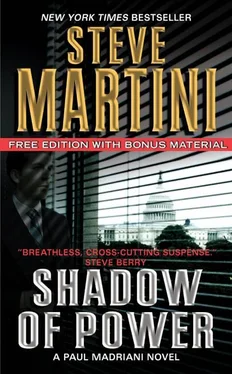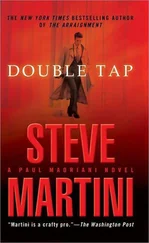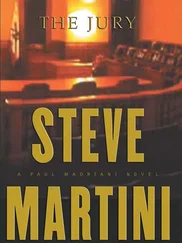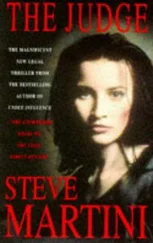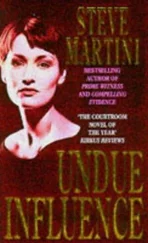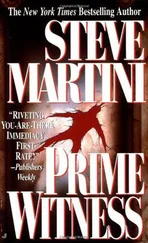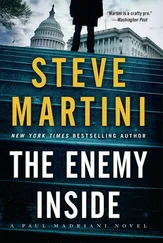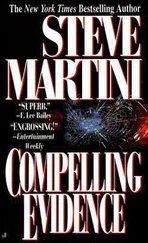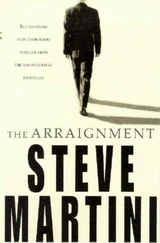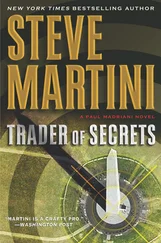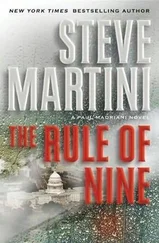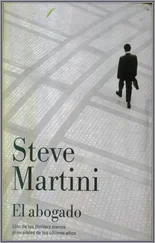“Of course, your answer assumes that the fingerprints on the floor and around the hammer belong to the killer and not someone else?” I say.
“Yes, but the issue is whether that assumption is reasonable,” says Prichert, “and in this case I would say that it is eminently reasonable, considering the absence of physical evidence pointing to any other possible perpetrator.” He sticks his sword in me one more time.
When I turn away from Prichert, I am greeted by Detective Detrick sitting at the prosecution table. If the toothy grin is any indication, he’ll be organizing a human wave out in the audience any second.
“Let me ask you, if the killer took off the gloves in the bathroom, why were there no prints found at that location?”
“I would have to assume it was because he was very careful,” says Prichert.
Of course this begs the question under their theory: Why was Carl so careful in the bathroom only to leave finger paintings all over the entry-hall floor? After being stabbed twice, I leave this as one of those rhetorical items you drop on the jury in closing argument, where Prichert won’t be hiding behind a bush to give me an answer. If I were to pop the question to him here on the stand, he would no doubt say, I don’t know. You’d have to ask him. The “him” in Prichert’s answer naturally would refer to the killer, but you can bet that the glasses on the neon nerd would be flashing their beams at Carl. At the moment I have no need to be walking around with that particular pike sticking out of my chest.
I move on to the extraneous hairs.
“Mr. Prichert, can you tell the jury the purpose of gathering hair and fiber evidence at the scene of a crime?”
“To examine and preserve them,” he says.
“Yes, but for what purpose? What do you use them for?”
“Well, in the case of hair, you would compare, say, a questioned hair sample found at the scene of a crime with a known hair sample taken from a suspect, or it might be a known hair sample, say, taken from a victim and transferred to an article of clothing belonging to a suspect.”
“Is there some vast database of known hair samples maintained somewhere so that if you find an unidentified hair at a crime scene, you can go there and compare it in an effort to find a match?”
“Not in the way you describe it,” he says. “There may be some small collections of known samples held by some law-enforcement agencies, but these would be specialized, confined to certain crimes. Repeat offenders, for example, in sexual-assault cases.”
“But that wouldn’t apply in a case like this?”
“No.”
“So in this case you’re left to compare the so-called questioned hair samples found at the scene with known hair samples that you find where?”
“On various parts of the body. It depends on the particular crime.” Like a cabdriver, Prichert knows where I want to go, but he takes me on a ride through the park.
“But whose body?”
“Ah. I see what you mean. That would depend.”
“On what?”
“Well, for example, you might want to take hair samples from known subjects who might have had occasion to contaminate the scene. First responders, for instance, police officers or emergency medical personnel who might have come on the scene.”
“Was any of that done in this case?”
“Yes.”
“And who did you take those samples from?”
“Maids at the hotel, the officers who first arrived at the scene. I think we may have even taken a few hairs from Detective Detrick over there.”
“That’s why some of us have flat feet and bald heads,” says Detrick. Everybody laughs.
“I hope you used pliers to pull these from the detective’s head?” More laughter.
“Aw, that’s mean.” He’s still laughing. Detrick may be the enemy, but as a person he is quite affable, the kind who might make a good neighbor if you didn’t have to drill his teeth every other day in court.
Quinn taps his gavel and brings us back to the subject at hand.
“These people that you took hair samples from, were any of them considered suspects in this case?”
“No.”
“Even the maids, the other hotel employees you might have taken samples from?”
“No. Certainly not at that point.”
“So other than torturing Detective Detrick, what was the purpose of all this?” A little laughter in the audience.
“We were clearing the scene. One of the things you have to do before processing a crime scene is to identify all the people who may have been there for legitimate purposes and who may have contaminated it by inadvertently leaving trace evidence-”
“Or footprints?” I ask.
He nods. “Sometimes.”
“But not this time, right?”
“I don’t understand the question,” he says.
“Then let me clarify it for you. You took samples of hair from officers at the scene, some hotel employees, and I emphasize the word ‘some,’ because in your mind, or perhaps at the direction of Detective Detrick, these persons were determined not to be suspects in this case, is that correct?”
“That’s right.”
“And this was done so that you could eliminate any trace evidence connected to them that you might find at the scene?”
“That’s correct.”
“But when you got to the defendant, you weren’t treating him as just another hotel employee who left trace evidence at the scene, were you?”
“No.”
“Why not? Was it simply because of the quantity of evidence, the footprints and fingerprints that belonged to him at the scene?”
“Objection,” says Tuchio. “The question assumes facts not yet in evidence.”
“Your Honor, the prosecutor in his opening statement has already told the jury that he intends to prove that the fingerprints and shoe impressions belong to my client. There is no dispute over that. The defense will stipulate to those facts,” I tell him.
In fact, I have offered this stipulation to Tuchio, who has refused it, wanting instead to trot out all these details in front of the jury, with pictures they can remember.
“I renew my objection,” says Tuchio.
He’s trying to break my rhythm.
“Overruled. I’ll allow the question,” says the judge.
“Was the only reason that you refused to clear Carl Arnsberg from the scene as you did the other hotel employees based on the quantity of evidence, his fingerprints and shoe prints found at the scene?”
“I don’t know. I didn’t make that decision.”
“Who did?”
For a second he looks like one of those dolls on the dash of your dad’s car, head on a spring. “Detective Detrick,” he says. “He was in charge of the case.”
I turn and look at Detrick. He knows he will be heading back to the woodshed when I get to my case in chief.
“Let me ask you.” I’m back to the witness. “Did you take any samples of hair from my client, the defendant, Carl Arnsberg?”
“Yes.”
“Did you take any samples of hair from any other suspects besides my client?”
“No.”
“So to your knowledge there were no other suspects who were even considered with regard to the commission of this crime?”
“I don’t know. All I know is that hair samples were not taken from any other suspect or person of interest.”
“Mr. Prichert, let me ask you, did you find any questioned samples of hair at the scene that matched the samples you took from my client, Carl Arnsberg?”
“No.”
“Then let me get this straight, so that I understand. According to the state’s theory of the case, the position taken by Mr. Tuchio, my client entered the room, bludgeoned the victim to death with a hammer, went back out into the hall, retrieved a tray with food on it, and brought it into the room, putting it on a table. Then, according to this theory, my client searched the room looking for something, went into the bathroom, where he wiped down the raincoat, took off a pair of gloves, then proceeded to leave, and-let’s not forget-then panicked or was startled by something and left shoe impressions in the entry, where he slipped and fell, leaving his fingerprints on the floor as well as on the murder weapon, and then finally left the room-and during all this he never dropped a single hair from his head or his body anywhere in that suite? Is that what you’re saying?”
Читать дальше
